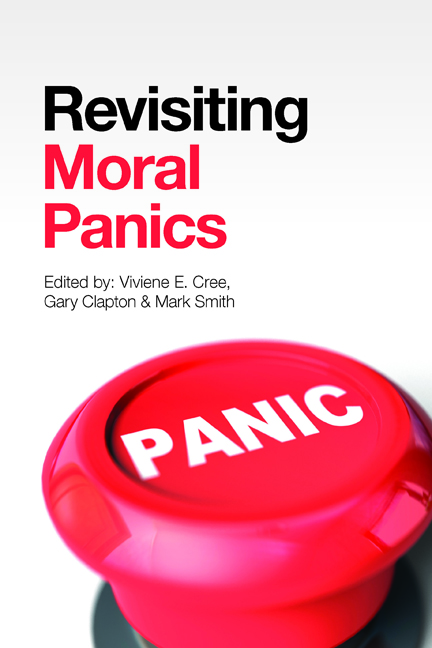Book contents
- Frontmatter
- Contents
- Contributors
- Preface
- Commentary moral panics yesterday, today and tomorrow
- Part One Gender and the family
- Part Two Moral panics in our time? Childhood and youth
- Part Three The state, government and citizens
- Part Four Moral crusades, moral regulation and morality
- Afterword the moral in moral panics
- Conclusion Moral panics and beyond
- Index
Fourteen - The presence of the absent parent: troubled families and the England ‘riots’ of 2011
Published online by Cambridge University Press: 08 March 2022
- Frontmatter
- Contents
- Contributors
- Preface
- Commentary moral panics yesterday, today and tomorrow
- Part One Gender and the family
- Part Two Moral panics in our time? Childhood and youth
- Part Three The state, government and citizens
- Part Four Moral crusades, moral regulation and morality
- Afterword the moral in moral panics
- Conclusion Moral panics and beyond
- Index
Summary
Introduction
The ‘riots’ in England during August 2011 involved a level of public disturbance and destruction rarely seen in the United Kingdom. These events resulted in widespread speculation as to the causes of, and solutions to, the violence and looting. The public and media responses could be seen as constituting a ‘moral panic’ in relation to the people involved, particularly in terms of the scapegoating of the young people who took part in the ‘riots’. In this regard, Prime Minister David Cameron argued that the involvement of many young people was related to poor parenting and absent fathers, and stated that he would seek to ‘turn around the lives of the 120,000 most troubled families in the country’. This chapter explores the way in which ‘troubled families’ were portrayed as a cause of people's involvement in the ‘riots’ and critically examines the implications of such understandings of and responses to public unrest. In particular, it demonstrates how the discourse and related initiatives depoliticise ‘riots’; how ‘problem families’ are portrayed as being a target for policy; and how the ‘riots’ were used to expand a policy direction already in place.
The ‘riots’
On 4 August 2011, Mark Duggan, a 29-year-old black man from Tottenham, was shot dead by police. On 6 August, a group of approximately 200 people gathered at Tottenham police station seeking further information regarding the incident. There is evidence that police used aggressive tactics that provoked a reaction from the crowd (Reicher and Stott, 2011), which was followed by some members of the public setting police cars on fire, throwing various objects at the police and causing damage to certain commercial buildings. From 6 to 10 August, public disturbance spread to various parts of England and appeared to involve a variety of motivations, including protesting against discriminatory police practices, reacting to general inequalities in society and elements of opportunism (Reicher and Stott, 2011).
On 11 August 2011, Prime Minister David Cameron made a parliamentary speech on the events and the actions that were being taken to address them (Cameron, 2011a On 11 August 2011, Prime Minister David Cameron made a parliamentary speech on the events and the actions that were being taken to address them (Cameron, 2011a).
- Type
- Chapter
- Information
- Revisiting Moral Panics , pp. 169 - 178Publisher: Bristol University PressPrint publication year: 2015

